King Cotton
Mar 9, 2020 10:47:06 #
The cotton plant is a shrub native to tropical and subtropical regions around the world, including the Americas, Africa, Egypt and India. Cotton is a soft, fluffy staple fiber that grows in a boll, or protective case. The fiber is almost pure cellulose. The greatest diversity of wild cotton species is found in Mexico, followed by Australia and Africa. Cotton was independently domesticated in the Old and New Worlds.
"King Cotton" is the slogan that summarizes the strategy by pro-secessionists in the southern states (the future Confederate States of America) to claim the feasibility of secession and to prove there was no need to fear a war with the northern states.
Georgia Cotton by Paul Sager, on Flickr
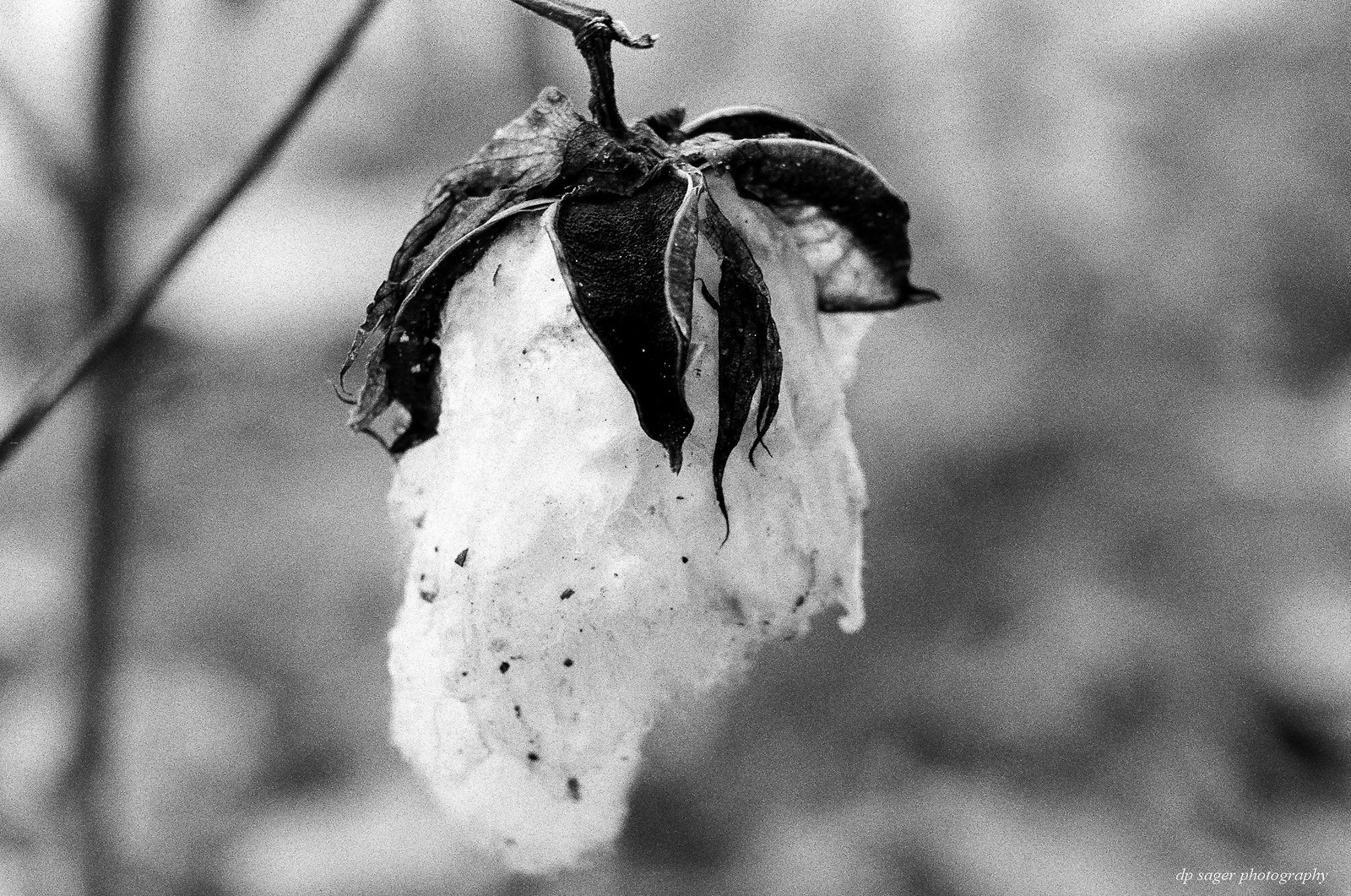
China is the world's largest producer of cotton, but most of their crop is used domestically. The United States has been the largest exporter for many years. Current estimates for world production are about 25 million tonnes or 110 million bales annually, accounting for 2.5% of the world's arable land.
The slogan, King Cotton, was widely believed throughout the American South, helping to mobilizing support for secession. By February 1861, the seven states whose economies were based on cotton plantations had all seceded and formed the Confederacy. Meanwhile, the other eight slave states, with little or no cotton production, remained in the Union.
Georgia Cotton
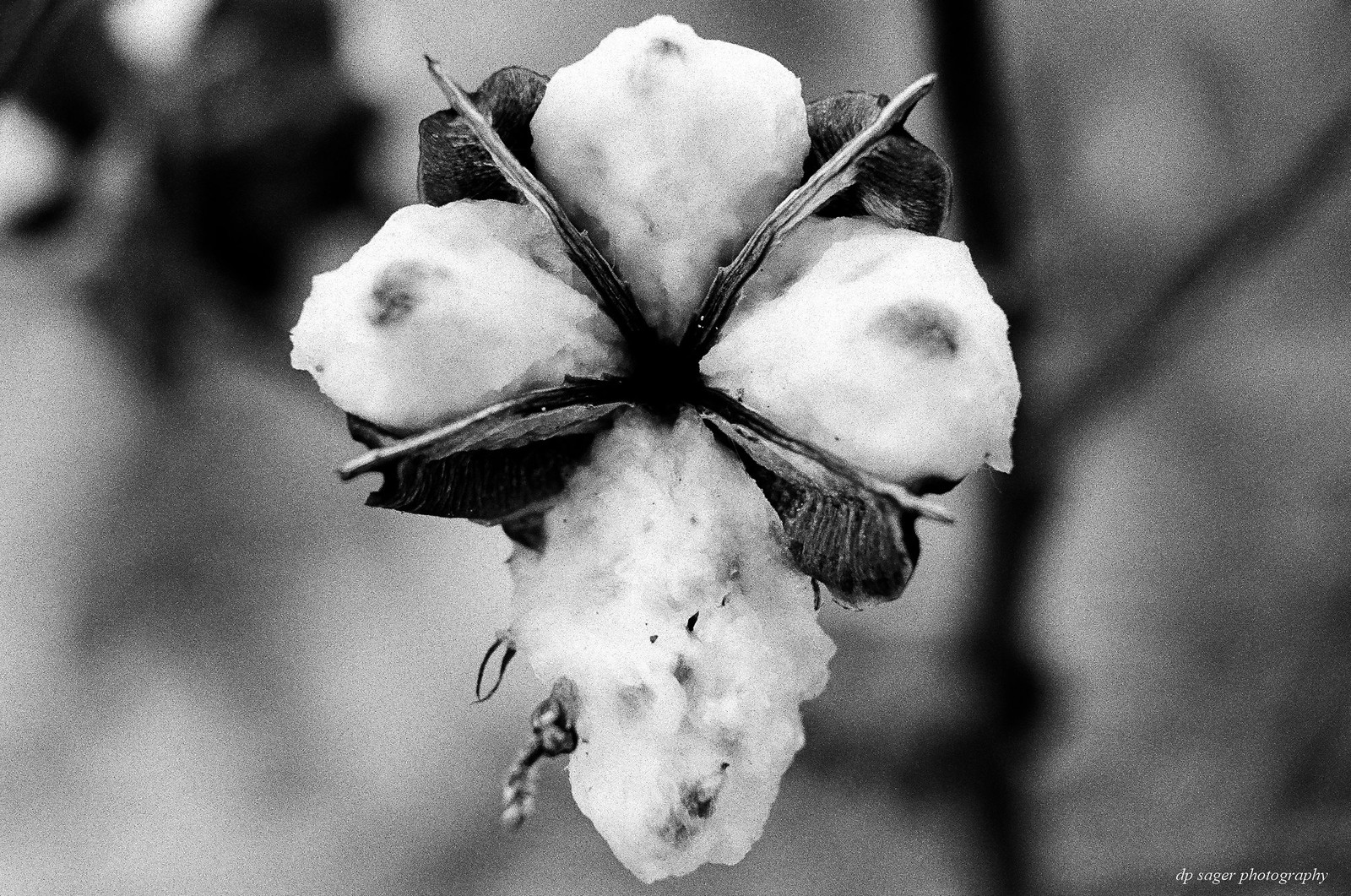
Successful cultivation of cotton requires a long frost-free period, plenty of sunshine, and a moderate rainfall, usually from 25- to 50-inches.
The American South is known for its long, hot summers, and rich soils in river valleys, making it an ideal location for growing cotton. The many southern seaports and riverside docks allowed shipping cotton to remote destinations. By 1860, Southern plantations supplied 75% of the world's cotton, with shipments from ports in Houston, New Orleans, Charleston, Mobile, Savannah, and others.
Georgia Cotton
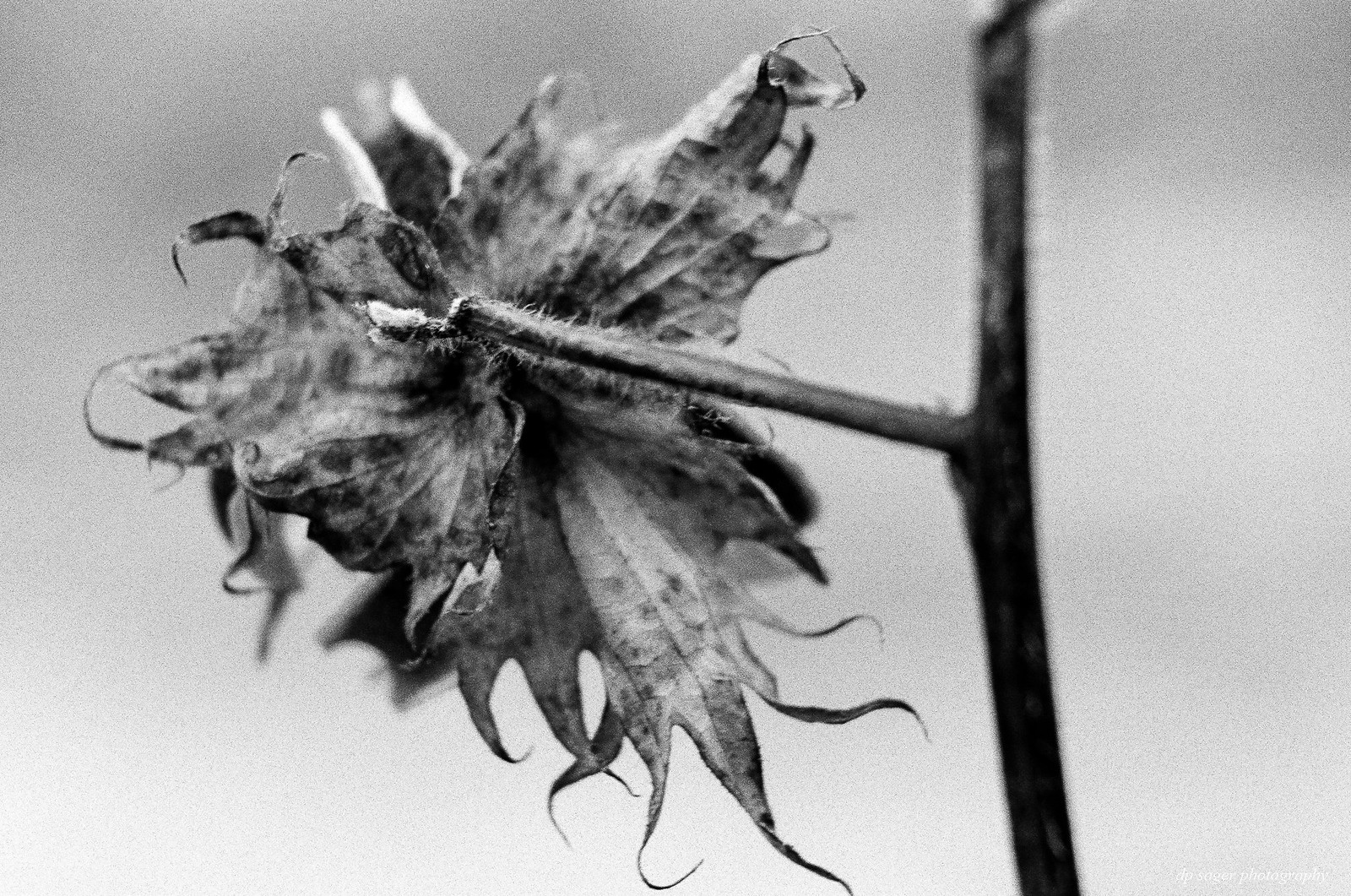
Camera: EOS 1v
Lenses: B&W - EF 70-200mm f/4L, Color - EF 135mm f/2L
Film: Kodak Tri-X 400 (shot w/ orange filter), Fuji Superia 400 (expired)
Production of the cotton crop for a given year usually starts soon after harvesting the preceding autumn. Cotton is naturally a perennial but is grown as an annual to help control pests.
Senator James Henry Hammond of South Carolina boasted in 1858, "Without firing a gun, without drawing a sword, should they make war on us, we could bring the whole world to our feet ... What would happen if no cotton was furnished for three years? ... England would topple headlong and carry the whole civilized world with her save the South. No, you dare not to make war on cotton. No power on the earth dares to make war upon it. Cotton is king."
Georgia Cotton
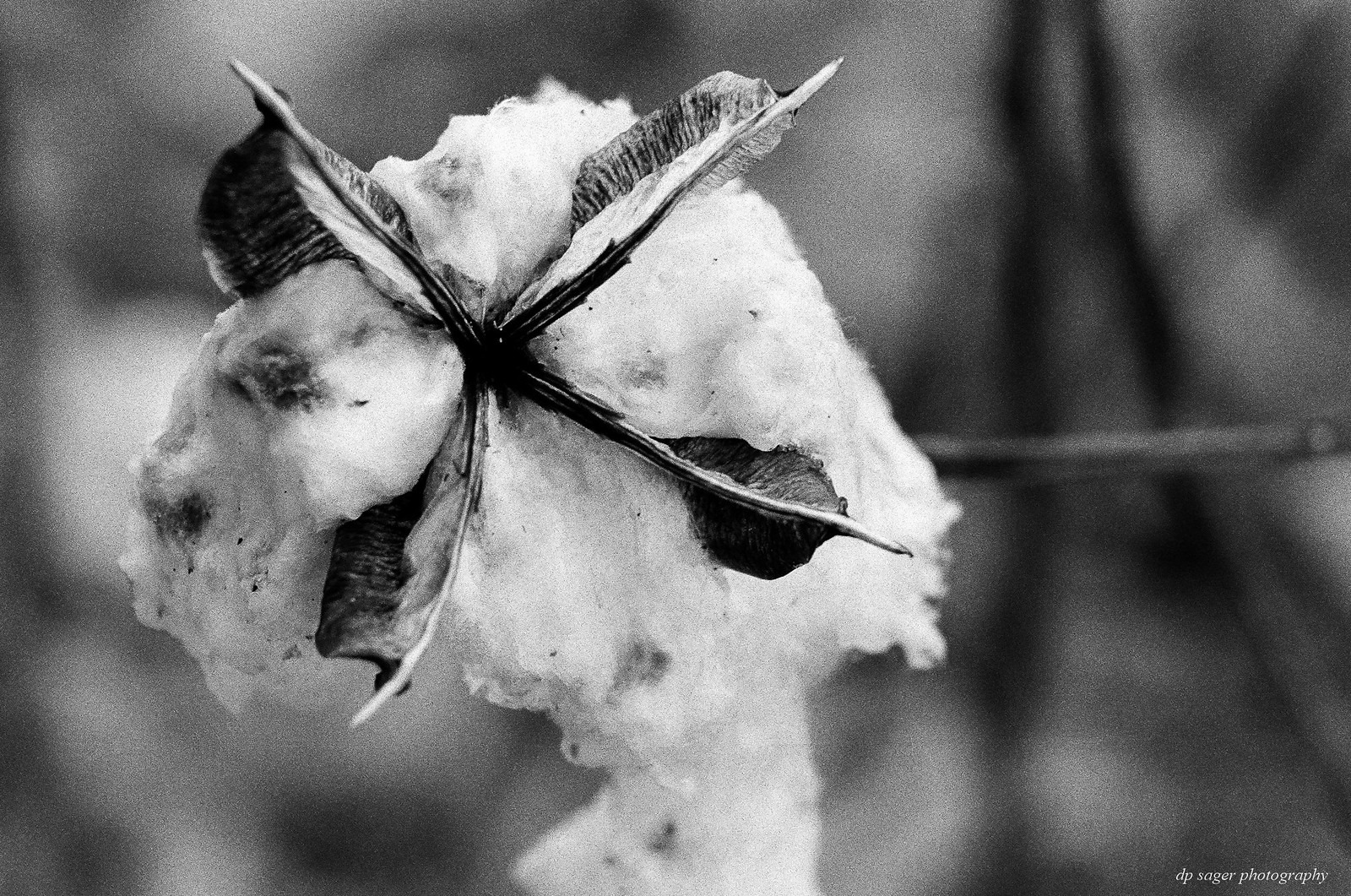
In the United States, Texas leads in total production, it is the state's leading cash crop. The California cotton industry generates revenues in excess of $3.5 billion annually, and provides more than 20,000 jobs.
Immediately after fighting started, the Union Navy blockaded every major Confederate port and shut down over 95% of exports. Since the British mills had large stockpiles of cotton, they suffered no immediate injury from the embargo. About one-fourth of Britain's food supplies also came from the United States, of much more importance than cotton. None of the European Powers intervened on behalf of the Confederacy during the war.
Georgia Cotton
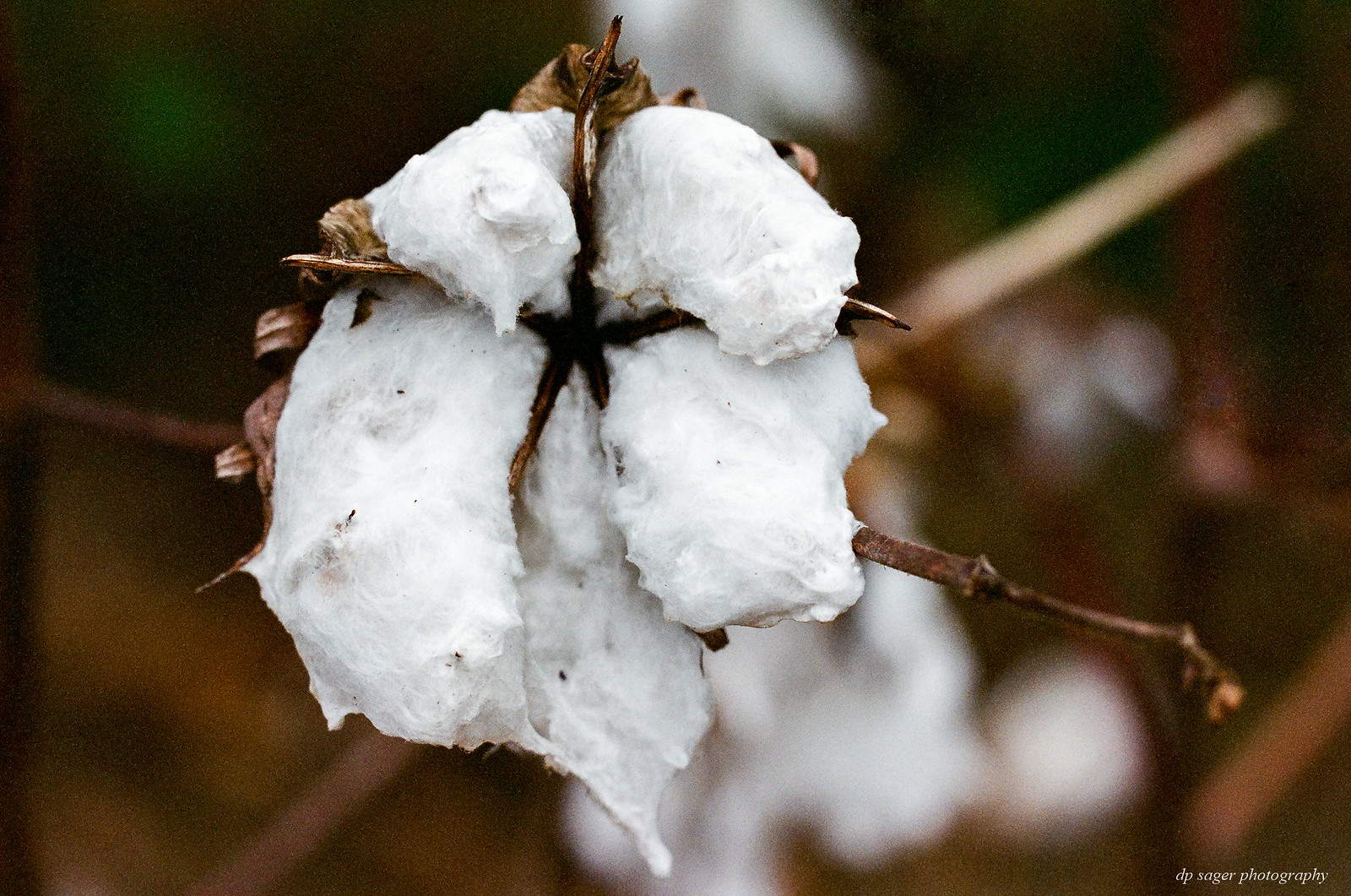
As Union armies moved into cotton regions of the South in 1862, the U.S. acquired all the cotton available, and sent it to Northern textile mills or sold it to Europe. Meanwhile, the cotton production increased in India by 70% and also increased in Egypt. Between 1860 and 1870, Brazilian annual cotton exports rose 400%, from 12,000 to 60,000 tonnes. In the end, "King Cotton" proved to be a delusion that misled the Confederacy into a hopeless war that it ended up losing.
The images are sized to fill your wide-screen display. Try using <F11> to maximize your browser window for the full effect. If the images overshoot your display, such as a laptop, just click on the image or the URL link and they'll resize to your screen from the host Flickr site. You can click a bit further into the image details on the Flickr page, if desired. EXIF data is available from the host Flickr pages as well. On the Flickr site, use your <L>key for Large and the <F11> for the full-screen.
If the images are not filling your widescreen display due to recent UHH changes, follow this link and update your UHH profile:
https://www.uglyhedgehog.com/t-572300-1.html
"King Cotton" is the slogan that summarizes the strategy by pro-secessionists in the southern states (the future Confederate States of America) to claim the feasibility of secession and to prove there was no need to fear a war with the northern states.
Georgia Cotton by Paul Sager, on Flickr

China is the world's largest producer of cotton, but most of their crop is used domestically. The United States has been the largest exporter for many years. Current estimates for world production are about 25 million tonnes or 110 million bales annually, accounting for 2.5% of the world's arable land.
The slogan, King Cotton, was widely believed throughout the American South, helping to mobilizing support for secession. By February 1861, the seven states whose economies were based on cotton plantations had all seceded and formed the Confederacy. Meanwhile, the other eight slave states, with little or no cotton production, remained in the Union.
Georgia Cotton

Successful cultivation of cotton requires a long frost-free period, plenty of sunshine, and a moderate rainfall, usually from 25- to 50-inches.
The American South is known for its long, hot summers, and rich soils in river valleys, making it an ideal location for growing cotton. The many southern seaports and riverside docks allowed shipping cotton to remote destinations. By 1860, Southern plantations supplied 75% of the world's cotton, with shipments from ports in Houston, New Orleans, Charleston, Mobile, Savannah, and others.
Georgia Cotton

Camera: EOS 1v
Lenses: B&W - EF 70-200mm f/4L, Color - EF 135mm f/2L
Film: Kodak Tri-X 400 (shot w/ orange filter), Fuji Superia 400 (expired)
Production of the cotton crop for a given year usually starts soon after harvesting the preceding autumn. Cotton is naturally a perennial but is grown as an annual to help control pests.
Senator James Henry Hammond of South Carolina boasted in 1858, "Without firing a gun, without drawing a sword, should they make war on us, we could bring the whole world to our feet ... What would happen if no cotton was furnished for three years? ... England would topple headlong and carry the whole civilized world with her save the South. No, you dare not to make war on cotton. No power on the earth dares to make war upon it. Cotton is king."
Georgia Cotton

In the United States, Texas leads in total production, it is the state's leading cash crop. The California cotton industry generates revenues in excess of $3.5 billion annually, and provides more than 20,000 jobs.
Immediately after fighting started, the Union Navy blockaded every major Confederate port and shut down over 95% of exports. Since the British mills had large stockpiles of cotton, they suffered no immediate injury from the embargo. About one-fourth of Britain's food supplies also came from the United States, of much more importance than cotton. None of the European Powers intervened on behalf of the Confederacy during the war.
Georgia Cotton

As Union armies moved into cotton regions of the South in 1862, the U.S. acquired all the cotton available, and sent it to Northern textile mills or sold it to Europe. Meanwhile, the cotton production increased in India by 70% and also increased in Egypt. Between 1860 and 1870, Brazilian annual cotton exports rose 400%, from 12,000 to 60,000 tonnes. In the end, "King Cotton" proved to be a delusion that misled the Confederacy into a hopeless war that it ended up losing.
The images are sized to fill your wide-screen display. Try using <F11> to maximize your browser window for the full effect. If the images overshoot your display, such as a laptop, just click on the image or the URL link and they'll resize to your screen from the host Flickr site. You can click a bit further into the image details on the Flickr page, if desired. EXIF data is available from the host Flickr pages as well. On the Flickr site, use your <L>key for Large and the <F11> for the full-screen.
If the images are not filling your widescreen display due to recent UHH changes, follow this link and update your UHH profile:
https://www.uglyhedgehog.com/t-572300-1.html
Mar 9, 2020 11:00:57 #
Mar 9, 2020 11:08:56 #
Picked a lot of cotton when a kid in the 1930's and early 40's. Back breaking work.
Mar 9, 2020 11:14:25 #
exakta56
Loc: Orford,New Hampshire
When the epic story of cotton is stripped of its importance, you are left with the inescapable injustice of SLAVERY. Not state's rights, not manifest destiny, but SLAVERY.
Mar 9, 2020 12:26:41 #
Mar 9, 2020 14:49:57 #
Mar 9, 2020 17:23:29 #
Mar 9, 2020 18:52:30 #
CHG_CANON wrote:
The American South is known for its long, hot summers, and rich soils in river valleys, making it an ideal location for growing cotton. The many southern seaports and riverside docks allowed shipping cotton to remote destinations. By 1860, Southern plantations supplied 75% of the world's cotton, with shipments from ports in Houston, New Orleans, Charleston, Mobile, Savannah, and others.
The American South is known for its long, hot summers, and rich soils in river valleys, making it an ideal location for growing cotton. The many southern seaports and riverside docks allowed shipping cotton to remote destinations. By 1860, Southern plantations supplied 75% of the world's cotton, with shipments from ports in Houston, New Orleans, Charleston, Mobile, Savannah, and others.
Fine images and narrative essay, Paul. B&W is perfect for that subject with a final color punch at the end.
I immediately thought of the legendary musician, Huddie "Leadbelly" Ledbetter, and his classic "Pick a Bale of Cotton." Did some searching and found on YouTube the only movie recording of him, playing this tune, and a couple more.
Thought you might enjoy it , considering your photo essay.
https://www.youtube.com/watch?v=SfU_ou9Fixw&list=RDpd5ViH_5598&index=2
Marshall
Mar 10, 2020 06:04:04 #
CHG_CANON wrote:
The cotton plant is a shrub native to tropical and... (show quote)
Enjoyed the pics and narrative, thanks Paul.
Mar 10, 2020 07:49:23 #
I really appreciate this history lesson, to bad it’s not taught as part of our country’s history.
Mar 10, 2020 09:05:01 #
Mar 10, 2020 09:27:42 #
Senator Hammond not a guy I’d choose for Stock tips or to be my Financial Planner.
Great information, as always!
Now that I have learned my “something for the day” I can lean back, have a peanut butter and jelly sandwich 🥪 and a chocolate milk, get fat and feel good about myself!
Seriously, I truly enjoy reading the information provided by our own canonman. Always stuff in there I didn’t know. Me having been an undergraduate History major, these informational contributions are very interesting. I appreciate the time and effort given to share these with all of us. Thank you.
Great information, as always!
Now that I have learned my “something for the day” I can lean back, have a peanut butter and jelly sandwich 🥪 and a chocolate milk, get fat and feel good about myself!
Seriously, I truly enjoy reading the information provided by our own canonman. Always stuff in there I didn’t know. Me having been an undergraduate History major, these informational contributions are very interesting. I appreciate the time and effort given to share these with all of us. Thank you.
Mar 10, 2020 10:27:26 #
It would take a lot of research to come close to your documentary about cotton in this post. Thank you very much.
I have a fraternity brother who got his PhD in plant pathology in the late 1950s and took essentially a lifetime job at Texas A&M. When genotyping came into the forefront he became "Mr Cotton" at the world level. When Australia had a problem with rust attacking their cotton. He went to work finding a gene modification that was resistant to rust, etc, etc. Just thought I would add that.
I have a fraternity brother who got his PhD in plant pathology in the late 1950s and took essentially a lifetime job at Texas A&M. When genotyping came into the forefront he became "Mr Cotton" at the world level. When Australia had a problem with rust attacking their cotton. He went to work finding a gene modification that was resistant to rust, etc, etc. Just thought I would add that.
Mar 10, 2020 12:17:17 #
Mar 10, 2020 12:19:07 #
Giradedon
Loc: Unalakleet, AK
I'm appreciating everyone's comments. I love wearing cotton clothing, I've seen a field but it's difficult to get the 'right photo' and you nailed it here. Thanks for sharing.
If you want to reply, then register here. Registration is free and your account is created instantly, so you can post right away.











